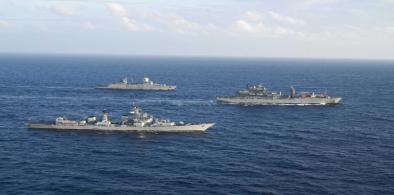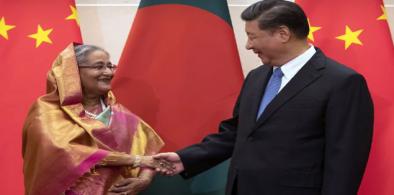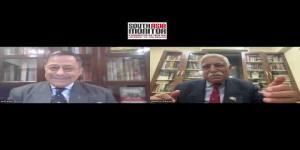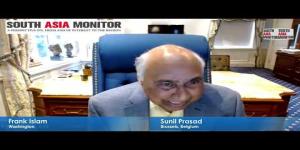Quad does create an overarching arc of stability in the region, checking the expansion capacity of Beijing, which will in turn boost India’s regional ambitions that are mutually aligned with the Quad’s objectives.

From Sir Creek to the Arabian Sea: India's Trishul Military Exercise Is A Double-Edged Sign
India's increased naval exercises, combined with its Indo-Pacific ambitions and Western partnerships, indicate a shift from coastal defense to regional management. For smaller coastal states, such patterns can readily translate into worry, not from an impending threat, but from an inferred sense of power. When a major power operates near contested or shared spaces, the neighbors are obligated to interpret purpose through action.
US-Russia-China Dynamics And A Changing Global Order
Xi Jinping's focus remains on projecting steady-handed leadership, reinforcing that China does not seek to replace the US but demands recognition of its legitimate sphere of influence. The Chinese approach is less about the symbolism of meetings and more about playing a long game, similar to the ancient strategy of Go (Weiqi): patient, adaptive, and quietly expansionist.
50 Years Of Bangladesh-China Ties: Trade, Infrastructure Investment Underpin The Relationship
China has become Bangladesh’s top development partner, providing the capital and engineering expertise. It provided funding and construction for the $4.63 billion Padma Bridge Rail Link. This project connects the underdeveloped south to the capital. China also built the $2.48 billion Payra Thermal Power Plant, a critical piece of energy infrastructure. It constructed the Bangabandhu Tunnel under the Karnaphuli River in Chittagong, the first of its kind in South Asia.
Indo-Pacific: Peace, Power, And India’s strategic balance
The Indo-Pacific has indeed been relatively more stable compared to many other geopolitically contested regions. The QUAD plays a role in deterrence and in norm setting, but its impact is partial. India, through its constellation of policies—Act East, SAGAR, IPOI, MAHASAGAR, etc.—contributes significantly to that peace
Modi visits to Brunei, Singapore show India's commitment to Indo Pacific engagement
Modi marked a new chapter in his strategic geopolitical moves over the past few months since the start of his third term with visits to the region and to Ukraine. All these marked a new frontier for India’s power projection while sending a clear message to allies and adversaries that New Delhi has its own bargaining chips in pursuance of its strategic neutrality while ensuring the best returns for its national security and international interests.
With increased militarisation, is a PLA demobilisation possible in Ladakh?
Vacating the Kailash Range without linking it to PLA withdrawal from Depsang-Demchok was a strategic blunder, proving how easily China cons our negotiators. Our political hierarchy wouldn't know how poorly this decision was viewed by our units/soldiers
How China-inspired democratic model empowering Sri Lanka's local communities
Sri Lanka’s TEPES and PEC share many similarities with China’s whole-process democracy. Both nations are working closely to exchange experiences and collaborate on the implementation of these systems in Sri Lanka.
‘Axis of Upheaval’: China, Russia-led coalition threatens West-led global order
First, Russia is engaged in a war that marks Putin's point of no return in his effort to undermine NATO and the West—particularly the U.S.—pursuing a long-term confrontation. To better position Moscow for this conflict, Putin has effectively doubled down on relations with like-minded partners - China, Iran, and North Korea.
US sanctions three Chinese companies for aiding Pakistan’s ballistic missiles programme
China-based Hubei Huachangda Intelligent Equipment Company, Universal Enterprise Limited, and Xi’an Longde Technology Development Company Limited (also known as Lontek) are sanctioned for having “knowingly transferred equipment and technology” to Pakistan, which is not a member of the Missile Technology Control Regime (MTCR) group, Miller said.
China-Bangladesh relations in an uncertain environment: Regional stakeholders need to see cooperative opportunities, not adversarial challenges
The intensification of geopolitical competition in the Bay of Bengal region may affect the healthy interaction between China and Bangladesh. Bangladesh, strategically located at the crossroads of South Asia and Southeast Asia, is a significant factor in the geopolitical and geoeconomic landscape of the Bay of Bengal.
Why China is playing the name game with India on Arunachal Pradesh
The historical manipulation of Tibet's relations with Monyul is a front that China plays against India on the China-India border dispute over the Indo-Tibet border. China has misinterpreted the history of Tibet's relations with Monyul to assert its territorial claim in the region.
India ‘will never be formal ally’ of US but can have ‘strongest’ ties as allies on global stage, says US diplomat
“One of the hardest things to keep in mind is that India is also a great power and it has its own beliefs, its own interests”, he said.
Quad foreign ministers warn of terrorists using new technology, demand action against Pakistan-based terror groups
Recalling the 26/11 Mumbai and the 2016 Pathankot terrorist attacks. they called for “bringing the perpetrators of these attacks to justice without delay”. This explicit mention of terror attacks on India, purported to be engineered from Pakistani soil, is seen as a strong backing by Quad partners of India's stand on cross-border terrorism which New Delhi says is promoted and supported by the Pakistani State.
Can India counter the Chinese challenge in the Indo Pacific?
China's rising military and economic involvement in the region provides India with a strategic challenge to formulate a foreign and security policy blueprint for the Indo-Pacific.
NATO’s 75th Anniversary Summit: Profound implications for Indo-Pacific geopolitics and regional security
The participation of Indo-Pacific partners in the NATO summit epitomizes the breaking of traditional geopolitical barriers, ushering in what is often referred to as "the new geometry" of international relations.
Beijing’s hold on Nepal will have long-term implications for India
India introduced the Agnipath system of recruitment in its military, denying regular recruitment to thousands of Nepalese Gurkhas into the Indian Army, not only aggravating unemployment in Nepal, but more importantly, shattering the strong bond between the Indian and Nepalese armies.
Dalai Lama in the US: Opportunity for Biden in election year to make a statement to China as India watches
From the Indian standpoint Prime Minister Modi may like to keep the Tibetan issue on the foreign policy agenda of his third term while dealing with a recalcitrant China. Its particular reference to the Tibetan issue remaining unresolved in accordance with international law may provide some opening to New Delhi to work on given the historical sensitivities of India's border dispute with China.
Restoring historical names in Tibet: Can India really show the mirror to China?
If NDA 3.0 wanted to show assertiveness to China, why were representatives of the Central Tibet Administration not invited for the osth-taking ceremony at Rashtrapati Bhavan on June 9, as they were invited in 2014 for the swearing-in of the then new NDA government.


























